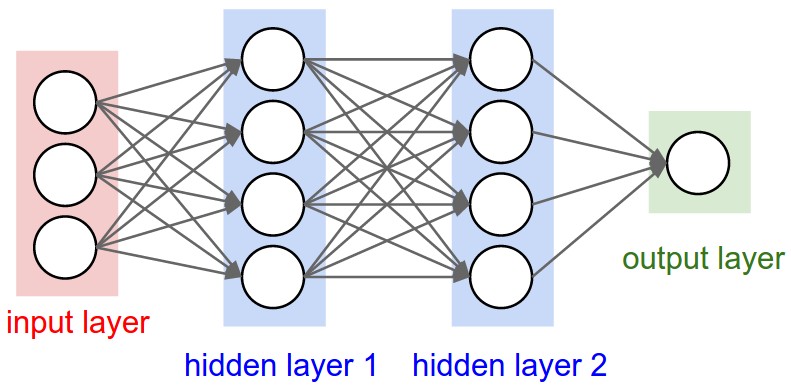Basic Neural Network
ai
Neural Network

- specific class of mathematical expressions
- take inputs as data, the weights, mathematical expression for the forward pass (neurons doing their local calc followed by their output), followed by a loss function, where loss function tries to measure accuracy of the predictions
- usually loss will be low when predictions are matching your targets
- we backward the loss; use backprop to get the gradient, then we know how to tune all the parameters to decrease the loss locally
- iterate the above many times using gradient descent
- simply follow the gradient info and that minimized the loss
- structure
- composes layers of neurons, layers compose neurons, and tie outputs from one layer to the next layer
- finally maps outputs from 2nd last layer to output layer with single neuron
forward pass: neurons compute their local state and output using the activation function
backward pass: use gradient descent to nudge values
measure loss: check computed loss function to see if loss is minimized
Neuron

- sum up weights and bias for each neuron
- apply activation function to sum of weights, which clamps extremes
- this is why hyperbolic tangent is used
gradient descent
- gradient (that we calculate with
Valueclass) is a vector that is pointing in the direction of increased loss- the derivative or gradient of this neuron is negative
- if the data value goes lower, we increase the loss
- to minimize the loss, we need to “point” in the opposite direction of the gradient vector, so we nudge the data value by a negative of its gradient
- modifiying each neuron’s data with a small step size in the direction of the gradient
- then we iterate this process until loss is minimized (to some definition of minimized)